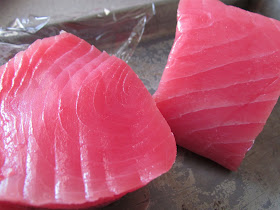So, we all know there are coconut lovers and coconut haters.
I don't think I've every found anyone who's indifferent to coconut. Do they exist?
If you're a lover, it may not have quite the pull that chocolate can have, but one can definitely use a fix every once in a while.
If you're a hater, you can probably just skip this one (because you'll hate it).
This is definitely for the lovers and it's reminiscent of coconut macaroons (a fork version of a coconut macaroon).
I was attempting to make a moist and slightly gooey coconut tart, but without using a can of condensed milk. It was decided that perhaps it would be a little TOO gooey, and TOO sweet.
It can be cut smaller, more like a sliver of something you might have with coffee or tea, or larger (the plate and fork version).
Plus, with a nice drizzle of chocolate it's a lot like a certain candy bar.
Coconut Tart
serves 10 or more
9 whole graham crackers, crushed to crumbs (about 1 1/4 c)
4 T butter, melted
2 T sugar
2 lg eggs
1/4 c heavy (whipping) cream
2 1/2 c sweetened shredded coconut
1/3 c sugar
1/2 t salt
1 t vanilla extract
Preheat oven to 350 degrees F.
Mix the graham cracker crumbs, sugar, and butter until it resembles wet sand. Press the mixture into the bottom and up the sides of a 9 inch tart pan with a removable bottom.
Bake 10 minutes, until the tart shell is set and slightly browned. Set aside to cool.
Keep oven set at 350 degrees F.
In the bowl of an electric mixer fitted with the paddle attachment, mix the eggs, cream, sugar, salt, and vanilla until well incorporated. Add the coconut and stir until combined.
Spoon the coconut mixture into the prepared tart shell and gently smooth so that the filling fills the shell. Bake 30 minutes or until the filling is set and the top of the tart is browned and toasted in spots.
Let cool completely before cutting.

























































